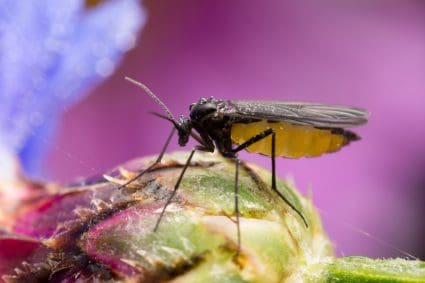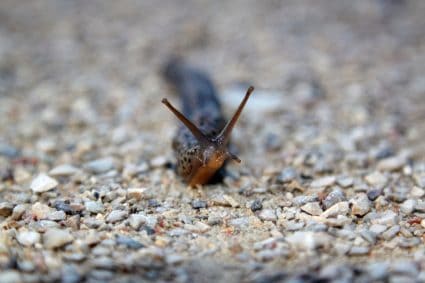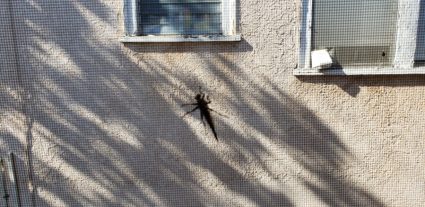
The sound of bees buzzing around can be discomforting. If not exterminated, these noisy insects can cause problems like painful stings and make your home a no-go area for other people. So, how do you keep these winged insects away from your space? Keep reading to learn 15 sure ways to do that.
Although beneficial to the ecosystem, bees are insects you don’t want to share your home with. Apart from the painful sting they give, the buzzing sound they produce can be extremely discomforting. To keep them away, here are some things you can do:
- Apply bee repellants like essential oil, peppermint oil, vinegar, etc.
- Avoid flowers and colors that attract bees.
- Introduce smoke under the beehive.
Below, we will consider 15 effective ways to deter bees from your home and answer a few questions about bee infestations.
15 Ways To Keep Bees Away
Bees are important to the ecosystem as they help plants grow by consuming pollen. They also produce honey, which has many nutritional and health properties that make them good for human consumption. But, as the saying goes, too much of everything is bad. If not controlled, bees can cause problems like stinging people.
Tired of sharing your home with these noisy insects? Here are 15 ways you can drive them away from your home permanently:
1. Introduce Smoke Under the Beehive

Smoking is one of the most effective ways to drive bees away from your house and have them never return. Bees interpret smoke as a sign of a fire and will flee from their current habitat to a safer location.
You can get paper, cardboard, or bits of wood and burn them under the beehive to force the bees out. Once you’ve lit the fire, don’t hang around to watch because the fleeing bees can get aggressive and attack you.
Instead, run indoors and close all doors and windows to prevent bees from relocating elsewhere in your house. It can take up to 10 hours for bees to migrate completely after a smoking session.
So, the best time to apply this method is at night, when the bees will all be in their hive.
2. Repel Them With Garlic
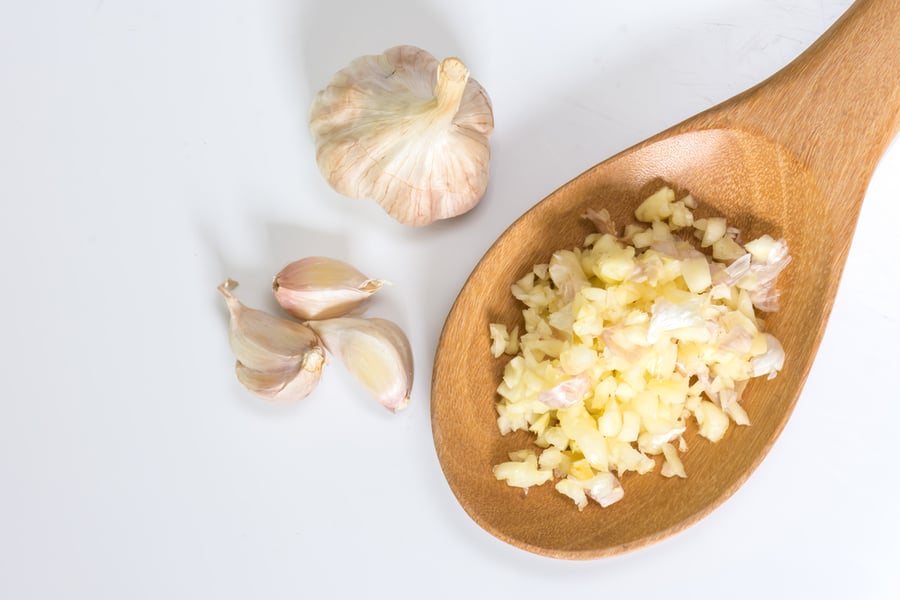
Bees have a strong sense of smell, which helps them identify flowers to pollinate. Garlic has a strong, pungent smell that bees cannot stand.
So, you can take some garlic and make it into a natural bee repellant. Get some garlic cloves, crush them, and mix them with water in a spray bottle.
Spray this solution where the bees gather and on flowering plants so they don’t relocate to your flowers. You can add hot pepper sauce or chili to the mixture to strengthen it.
3. Apply Cinnamon
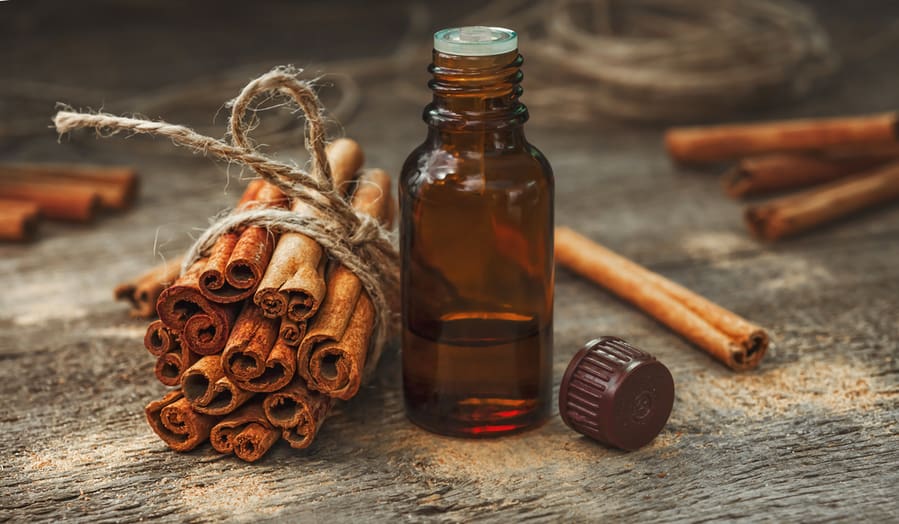
Cinnamon is another plant with a strong scent that bees hate. For this reason, you can use cinnamon to force bees away from your home.
Simply spray cinnamon over the areas where you don’t want bees. Alternatively, add a few drops of cinnamon oil to baby shampoo to make a bee-repellant spray.
Spread the cinnamon or use the spray daily for a week for better results. Once the bees pick up the scent of cinnamon, they will look for somewhere else to gather.
4. Light Citronella Candles in the Bee-Infested Areas
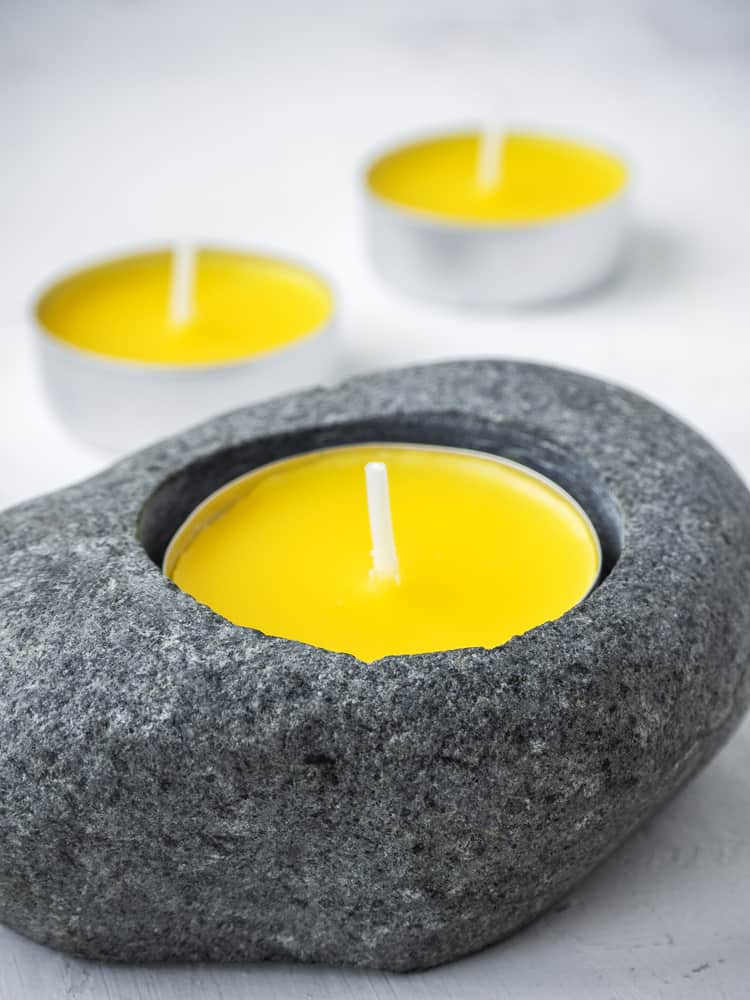
Citronella candles are another effective remedy against a bee infestation. Bees find the scent of citronella unpleasant and will migrate once they perceive it.
These candles are very affordable, so lighting one won’t cost much. You can find them at any candle shop or departmental shop near you.
These candles are always in demand because they repel several flying insects, including bees, wasps, flies, and mosquitoes. To use them against bees, simply light one and leave it near the beehive.
The best time to use this candle is at night because that is when bees return to their hive. If you can’t get citronella candles, you can get citronella oil instead.
Put citronella oil in an oil diffuser and allow the scent into the atmosphere. You will get the same results as with the candle.
5. Place Mothballs Around the Beehive

Like water and oil, bees and mothballs do not mix well. Mothballs contain chemicals that drive bees away and may even kill them.
So, this may not be the best method if you are interested in the honey in their beehive. The chemicals in mothballs can contaminate honey, making it unfit for human consumption.
A safer option is to buy mothballs that contain paradichlorobenzene and not naphthalene. It has a much milder effect on bees. It will only drive the bees away and not kill them.
Place these mothballs in a sock or wrap them in a strip of cloth. Then, tie it to a string and hang it near the beehive.
The more mothballs you add, the stronger the effect. However, making it stronger adds harm to the bees.
If you have children or pets in the house, you must be cautious while using mothballs as a bee repellent. Ensure the balls are out of their reach to avoid adverse effects.
6. Use Vinegar

Before now, you probably know vinegar as a kitchen staple for preparing mayonnaise, ketchup, and sauces. Well, there is more to this liquid than using it as an ingredient in food preparation. Vinegar has many other uses, including repelling bees.
Both raw vinegar and apple cider vinegar contain malic acid, a natural agent bees dislike. The acid is the active agent in vinegar that drives bees away and is a better alternative to chemical repellants. Vinegar has a strong, foul smell that can suffocate bees and disrupt their respiratory system.
There are many ways to apply vinegar as a bee repellant. The first method is to apply the vinegar liquid to the beehive. However, if you are working with undiluted vinegar, don’t apply it directly on the hive but around it.
The second way is to drown bees in water mixed with vinegar. Simply fill some containers with water and drop some vinegar into them.
Next, place these containers close to the beehive and wait for the bees to fall into them. The water and the vinegar solution will make it nearly impossible for them to fly out of the container.
The third method involves using a spray bottle. Here, mix water with vinegar in equal parts. Then, shake and spray around the beehive at night. Once the mixture touches the bees, it will become difficult for them to fly.
If you spray the beehive at night, this method will drive the bees away before you wake up.
When approaching the beehive with a spray bottle, wear protective equipment so the bees can’t attack you.
Note also that using vinegar to drive bees away is not very efficient against heavy infestations. So, if you are dealing with a severe bee infestation in your house, you will have to find a much stronger alternative. Keep reading to learn the methods to apply in such a situation.
7. Plant Bee-Repellant Flowers and Vegetables
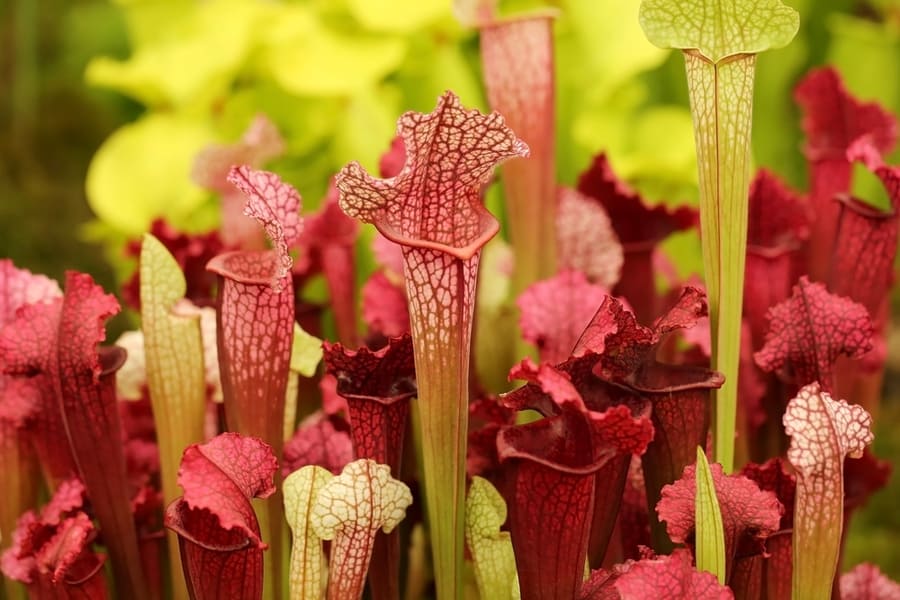
One thing with bees is that they will always seek out nectar from plants. You can use their attraction to plants against them by planting the ones they don’t like.
Mint, eucalyptus, pennyroyal, and neem are some plants with strong smells that can repel bees. For flowers, you can plant red marigolds and red geraniums. Bees will assume that these flowers have pollen and move to pollinate them.
On the contrary, they do not have pollen, and bees find their smell offensive. This will drive bees away once they notice that there is nothing to pollinate.
Pitcher plants are another example of bee repellants. These plants are carnivorous natural exterminators that trap insects like bees in their pitcher-shaped structure.
After enclosing insects, the pitcher plant will then ingest and digest them. You can research the easiest bee-repellant plants to grow in your neighborhood and choose the one you like.
8. Plant Cucumber in Your Garden

Cucumber peels are acidic and can repel insects like bees and wasps. Planting cucumber in your garden is one way to manage a bee infestation.
However, sometimes, bees leave the yard and try to get into the house through open doors and windows. In such cases, you can take cucumber peels and set them on or around your window sill. This should keep the noisy insects far from your house.
9. Apply Vanilla Extract

Vanilla extract is another well-known natural bee repellant. You can use them to keep bees far away from your garden and house.
Vanilla extract contains certain chemicals that irritate bees. So, if you apply the vanilla extract to your plants, bees will get turned off by their scent.
In an occurrence of a bee attack, this repellant can also help to keep bees off your body. Simply mix one tablespoon of vanilla extract with water to make a spray.
You can rub some on your arms to discourage insects from perching on you. If you can’t stand vanilla on your skin, replace it with baby oil.
10. Skip Bright Colors

Bees are naturally attracted to brightly-colored flowers and plants. If you wear bright colors around the yard, they may mistake you for a flower and attack.
Some colors to avoid if you want to dispel bees are yellow, red, green, and purple. This rule does not apply only to clothes but also to the decoration and accessories in your house.
Let’s say you are hosting a picnic in your garden. It is natural to opt for floral colors. However, if there are chances of bee threats, this may not be a good idea. Instead, go for tablecloths and napkins in muted tones to keep your event bee-free.
11. Avoid Flowers That Attract Bees

Bees don’t fly around without a mission. If they are frequenting your building, something is drawing them close.
The two main things that attract bees are nectar and pollen. Both of these are found in flowering plants. Nectar is the food bees need to survive, so they will do anything to get to it.
To prevent this from happening, avoid planting flowers that they love. These include sunflowers, lilacs, poppies, honeysuckle, snapdragons, wisteria, and pale purple coneflower.
Another way to know which flowers bees are drawn into is through the color scheme discussed above. Note the colors bees like and avoid planting flowers that have those colors.
12. Spray Water and Essential Oil Mix

Essential oils are natural products that chase insects away without killing them. Some essential oils that repel bees are peppermint, clove, rosemary, eucalyptus, cedarwood, and geranium oils.
You can dab any of these oils on your skin to prevent bee stings. Alternatively, you can soak some cotton balls in essential oil and drop them where bees gather.
You can even make an essential oil spray by mixing the essential oil with water. The right concentration for this essential oil spray is five drops of oil to half a cup of water. Feel free to experiment and mix different oils of your choice.
13. Sprinkle Organic Baby Powder
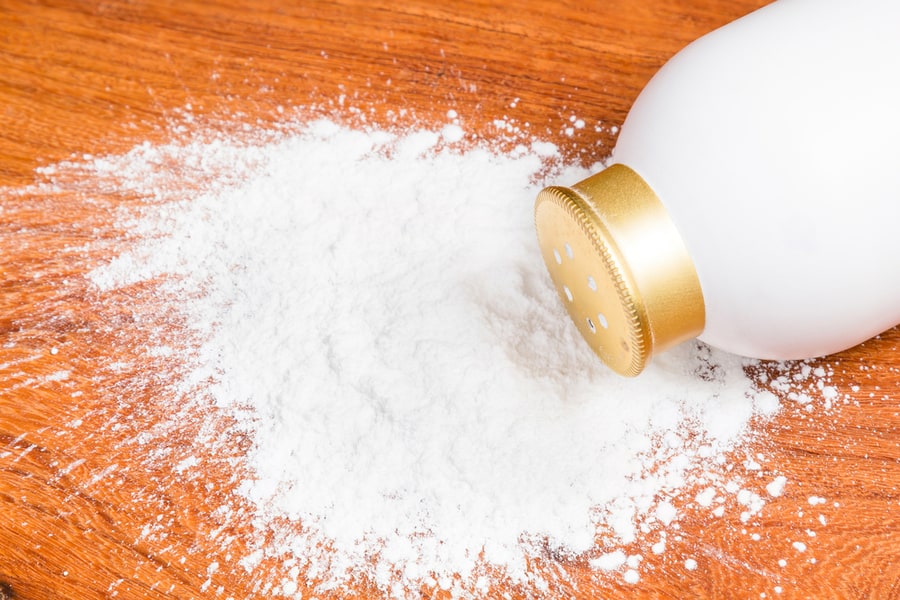
Baby powder is an effective bee repellant. However, not all baby powders are 100% natural.
If you want to try this technique, ensure you buy organic baby powder. Otherwise, it won’t work.
Sprinkle some organic baby powder around your doorway, window frames, and any other area with a bee infestation. This will discourage bees from coming around.
14. Apply Bee Spray

Bee spray is an insecticide that targets the nervous systems of bees, causing paralysis and death. This insecticide contains strong chemicals. Once they fall on bees, paralysis and death are instant.
The best time to apply this insecticide is at night when the bees have returned to their hive. This way, you can spray the insecticide only in one area, so the smell doesn’t diffuse to other places in the house. The odor of bee insecticides may have serious side effects on pets and humans.
Remember to wear protective gear when going close to the beehive to spray the insecticide so you don’t get stung.
Bee spray is only fit for outdoor use. For indoor bee extermination, try other alternative repellant methods.
15. Spray the Beehive With Soap and Water Solution

Soapy water works well in repelling bees, as the soap creates a wax coat that makes it difficult for them to fly. If soapy water drops on the beehive, it can restrict the air supply to the hive and cause suffocation.
You can make this soap and water solution by mixing laundry or dish soap in a can of water. Keep adding soap and water until it forms plenty of bubbles.
Afterward, spray the mix using a hose or get close to the hive and pour it on the surface. However, getting close to beehives is dangerous. So, ensure you wear protective equipment.
Conclusion
Although beneficial to the ecosystem, bees are troublesome insects to deal with. To avoid getting stung by these insects, you must reduce their population around your house.
We suggested 15 tested and trusted strategies in this guide. We are confident that if you follow the guidelines carefully, your bee problem will soon be a thing of the past.
Frequently Asked Questions
Do Birds Deter Bees?
Yes! Some birds, like purple martins, feed on insects like bees, termites, wasps, and ants. As natural predators, birds can prevent bees from swarming around your house.
You can place bird feeders painted in bright colors at different points to attract these bee-eating birds. Once the birds perch there, they can easily hunt down the bees that are causing you discomfort.
What Is the Safest Way To Get Rid of Bees?
The best way to get rid of bees is by calling professional beekeepers. These are experts that run bee farms and apiaries.
They have the right expertise and equipment to remove bees from your house to a different location. Engaging the services of professional beekeepers is expensive. So, only use it as a last resort.

